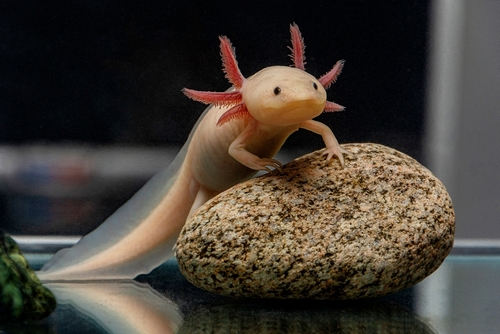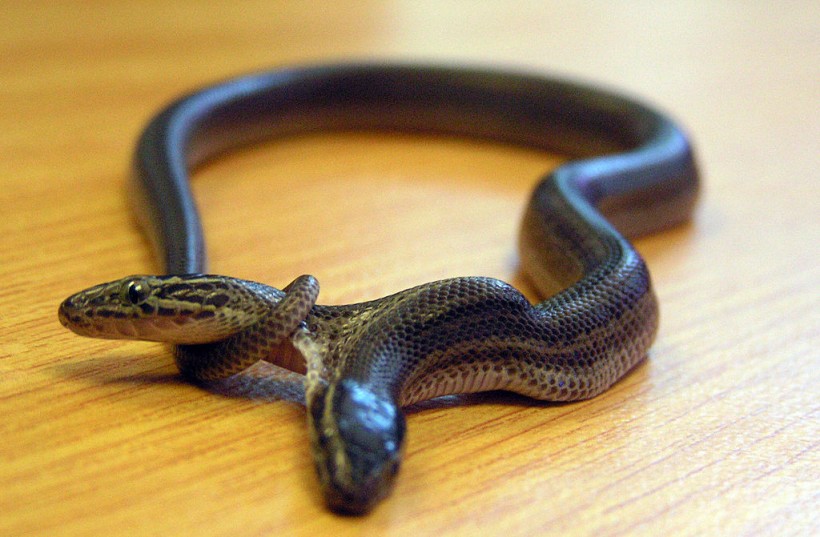Weird Animals with Genetic Mutations
Nature's creativity knows no bounds, especially when it comes to the genetic variations that produce some of the most bizarre and fascinating creatures on Earth. These weird animals with genetic mutations captivate scientists and enthusiasts alike, offering unique insights into genetics, evolution, and biodiversity.
This article explores some of the most intriguing examples, shedding light on the science behind these anomalies and their implications for our understanding of life.
The Phenomenon of Genetic Mutations
Genetic mutations are changes in the DNA sequence that occur naturally or due to environmental factors. While many mutations are harmless or even beneficial, others can lead to striking physical changes. These mutations can result in unusual appearances, extraordinary abilities, or even new species characteristics.
The Science Behind Mutations
Mutations occur due to errors during DNA replication, exposure to radiation, chemicals, or viruses. They can be classified into several types, including point mutations, insertions, deletions, and chromosomal rearrangements.
The effects of mutations can vary widely, from negligible to dramatic, depending on the genes involved and the organism's overall genetic makeup.
Evolutionary Significance
Genetic mutations play a crucial role in evolution, providing the raw material for natural selection. Mutations that confer an advantage may become more common in a population over generations, leading to evolutionary changes.
Conversely, harmful mutations may be weeded out through natural selection, although some can persist and contribute to the diversity of life.
Fascinating Examples of Genetic Mutations in Animals
The animal kingdom is replete with examples of genetic mutations that result in peculiar and often astonishing traits. Here are some notable instances:
The Axolotl: The Eternal Juvenile
 The axolotl (Ambystoma mexicanum) is a salamander species known for its remarkable ability to retain its larval features throughout its life, a condition known as neoteny. This genetic mutation allows the axolotl to remain aquatic and gilled, unlike most amphibians that undergo metamorphosis to become terrestrial adults.
The axolotl (Ambystoma mexicanum) is a salamander species known for its remarkable ability to retain its larval features throughout its life, a condition known as neoteny. This genetic mutation allows the axolotl to remain aquatic and gilled, unlike most amphibians that undergo metamorphosis to become terrestrial adults.
Scientific Insights
- Axolotls possess the unique ability to regenerate limbs, spinal cord, heart, and other organs.
- Their neoteny is linked to the expression of specific genes that inhibit the process of metamorphosis.
- Studies on axolotls provide valuable insights into regenerative medicine and genetic regulation of development .
The Blue Lobster: A Rare Marine Marvel
Blue lobsters are a rare sight in the ocean, with an estimated occurrence of about 1 in 2 million. This striking blue coloration is the result of a genetic mutation that affects the way pigments are produced and distributed in the lobster's shell.
Scientific Insights
- The blue color is caused by an excessive amount of a particular protein, crustacyanin, which interacts with the red carotenoid astaxanthin.
- This mutation highlights the complexities of genetic control over pigmentation and has implications for studying genetic diversity in marine species .
The Cyclops Shark: One-Eyed Wonder
 In 2011, fishermen off the coast of Mexico caught a cyclops shark, a rare specimen with a single, centrally located eye. This condition, known as cyclopia, results from a genetic mutation that affects the development of the embryonic forebrain and eye fields.
In 2011, fishermen off the coast of Mexico caught a cyclops shark, a rare specimen with a single, centrally located eye. This condition, known as cyclopia, results from a genetic mutation that affects the development of the embryonic forebrain and eye fields.
Scientific Insights:
- Cyclopia is usually fatal in the wild due to the associated developmental abnormalities.
- The study of such rare occurrences helps scientists understand the genetic pathways involved in vertebrate development and the potential impacts of genetic mutations .
The Two-Headed Snake: A Serpentine Oddity
 Two-headed snakes, or bicephalic snakes, are another example of genetic mutation leading to a striking physical anomaly. This condition occurs due to incomplete splitting of an embryo during development, resulting in two heads sharing a single body.
Two-headed snakes, or bicephalic snakes, are another example of genetic mutation leading to a striking physical anomaly. This condition occurs due to incomplete splitting of an embryo during development, resulting in two heads sharing a single body.
Scientific Insights:
- Bicephaly can complicate feeding and movement, often reducing the animal's chances of survival in the wild.
- Research on two-headed animals provides insights into embryonic development and the factors that influence cellular differentiation and organismal structure .
Genetic Mutations and Their Broader Implications
Beyond the immediate fascination these animals inspire, their genetic mutations have broader implications for science and society. Understanding these mutations can lead to advancements in medicine, conservation, and our comprehension of life's diversity.
Medical Research and Biotechnology
Genetic mutations in animals often mirror human genetic disorders, making these creatures valuable models for medical research. For instance, studies on axolotls' regenerative abilities can inform regenerative medicine and potential therapies for human injuries and degenerative diseases.
Scientific Insights
- Research on animals with unique genetic traits helps identify genes and pathways that could be targeted in human medical treatments.
- Advances in CRISPR and other genetic editing technologies are opening new frontiers in treating genetic disorders by correcting mutations at the DNA level .
Conservation and Biodiversity
Genetic diversity is a cornerstone of species survival and adaptation. Studying animals with genetic mutations enhances our understanding of biodiversity and the evolutionary processes that sustain it. Conservation efforts can benefit from such knowledge by focusing on preserving genetic variability within populations.
Scientific Insights:
- Genetic mutations contribute to the adaptability and resilience of species in changing environments.
- Conservation strategies can be informed by understanding the genetic factors that influence population health and viability .
Ethical and Philosophical Considerations
The existence of genetically mutated animals also raises ethical and philosophical questions. Should humans intervene to correct or eliminate genetic mutations in wild populations, or should nature take its course? How do we balance the fascination with the unusual against the potential suffering these animals might endure?
Scientific Insights:
- Ethical considerations in genetic research and intervention are crucial to ensuring humane and responsible treatment of animals.
- Philosophical debates on the nature of life and the role of genetic mutations challenge our understanding of normalcy and the natural world.
Conclusion
The weird and wonderful animals with genetic mutations serve as a testament to nature's boundless creativity and the complexity of life. They captivate our imagination, drive scientific inquiry, and enrich our understanding of genetics and evolution. By studying these anomalies, we gain valuable insights into the mechanisms that generate biodiversity and the potential applications of this knowledge in medicine, conservation, and beyond.
Embracing the diversity of life, including its genetic quirks and marvels, reminds us of the intricate web of existence that connects all living beings. It challenges us to look beyond the ordinary and appreciate the extraordinary in the natural world. As we continue to explore and understand these genetic mysteries, we uncover not only the secrets of other species but also the profound interconnectedness of life on Earth.
References
- Tanaka, E. M., & Ferretti, P. (2009). Considering the axolotl: its unique genetic make-up and its use in regeneration studies. Seminars in Cell & Developmental Biology, 20(4), 369-376.
- Whited, J. L., & Tabin, C. J. (2009). Limb regeneration revisited. Journal of Biology, 8(1), 5.






































